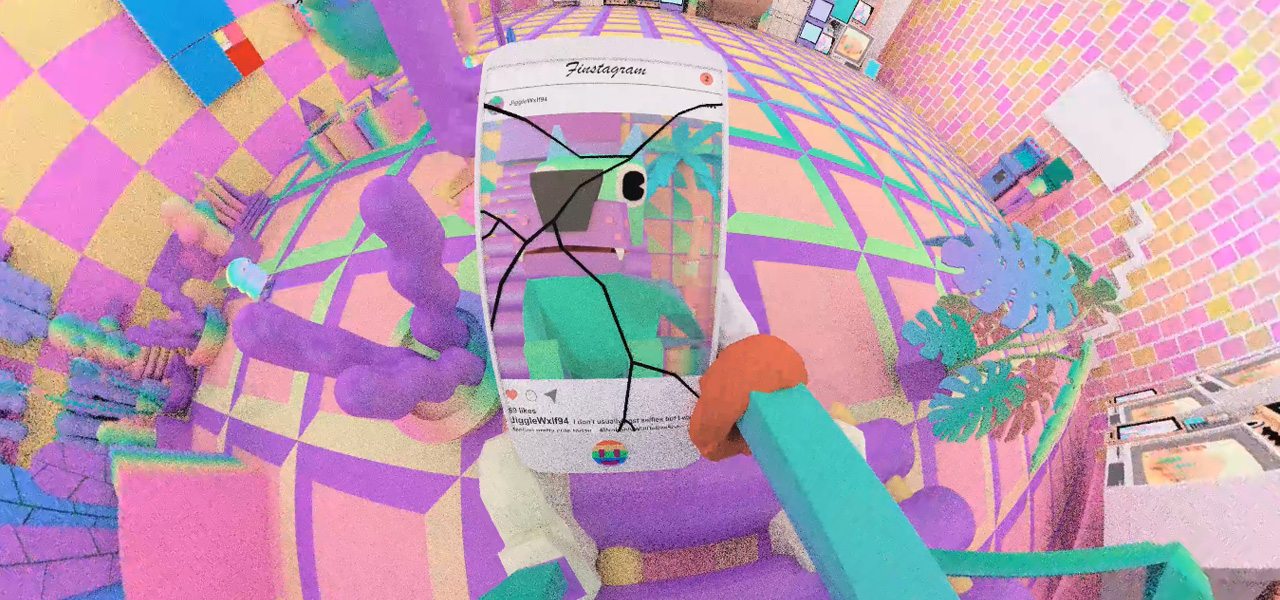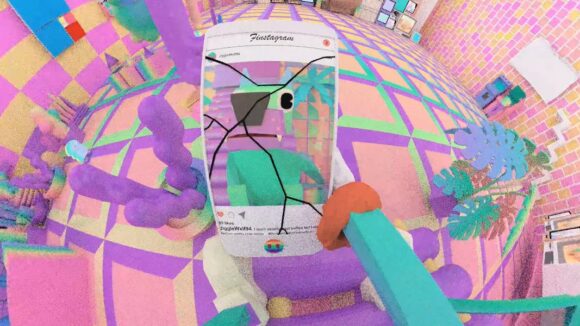

Exclusive Premiere: ‘Plant Room,’ A 360-Short By Jeron Braxton And Julian Glander
Jeron Braxton and Julian Glander are illustrators, designers, 3d animators, and filmmakers whose low-poly and glitch-inspired art dives into the areas of daily technologies, often inspired by internet and video game culture.
The pair recently collaborated on a 360 cg experimental short called Plant Room. The short features four different virtual environments filled with modern and organic life, and offers viewers the chance to explore the areas or simply take in what they see directly in front of them.
Cartoon Brew is premiering Plant Room right here, and also found out how and why it was made from Braxton and Glander themselves. (Braxton’s short, Glucose, recently premiered as part of season of Cartoon Brew’s CB Fest.)
Braxton and Glander met at SXSW this year for the first time. Each knew of the other’s work and talk between them quickly turned to collaboration. “I think we maybe even started talking about this idea within the first five minutes of meeting each other,” Glander told Cartoon Brew.
“Actually,” said Braxton, “the last night of the film fest Julian emails me a file titled ‘plant room’ that he [had] started on and I began to add to it. We felt our styles would mesh well together and it started off more as an aesthetic creation. However, as time went on it blossomed into a well-rounded conceptual piece about our lives in relation to nature and technology.”

Indeed, Plant Room takes a journey through four life stages, each showing how technology can take over. It begins in a pristine natural environment that eventually, as Glander describes it, “devolves into a psychotic techno-mainframe kinda deal.”
The short was originally intended as a traditional narrative piece, but the pair had both been keen to try out immersive content. Using the open-source Blender software, Plant Room’s environments, props and characters were crafted by Glander and Braxton in 3d. Once the decision was made to make the piece a 360 degree video, Braxton notes that the project files and environments had to be re-visited and updated to make more sense in that space.

“There are a lot of shortcuts you can get away with in normal videos that won’t fly with 360,” Braxton said. “We almost had to approach designing the environments like a video game developer because it had to make sense from every angle.”
One challenge – faced by all vr and 360 degree filmmakers – is that the viewer can see just about anywhere, which creates issues about where to make them look, and where to add more or less detail. The filmmakers handled this partly by creating generative and procedural effects to fill the scenes, and relying on the default camera placement.

“If the experience starts out looking in a certain direction, the viewer kind of understands that that’s where the focus is,” said Glander. “Movement is another trick. If the camera is moving in a certain direction, we instinctively want to be ‘on track’ as viewers so we look in that direction. I also think it helps that Plant Room is pretty slow-moving though and not especially narrative focused.”
In addition to Plant Room being a way to further explore their favorite themes of ‘technology’ and ‘digital life,’ Braxton and Glander say it was also a chance to learn more about collaboration.

“This was my first time collaborating with another animator,” noted Braxton. “The collaboration opened my mind to creating animation in totally new ways that ultimately culminated in going from creating a 2d video to a 360 video. I feel like this collaboration was us doing the Dragon Ball Z fusion dance to create this dope video that combines both our styles in a brand new powerful format. Teamwork definitely makes the dream work and this is the start of something beautiful.”
